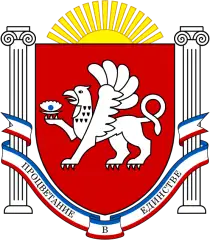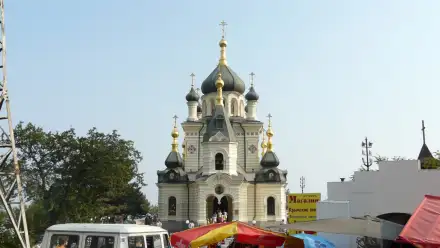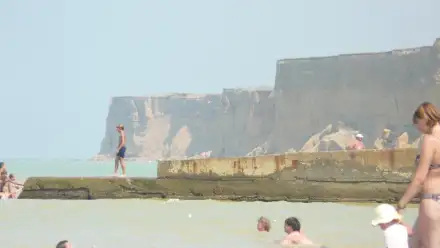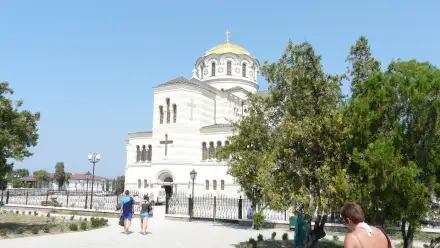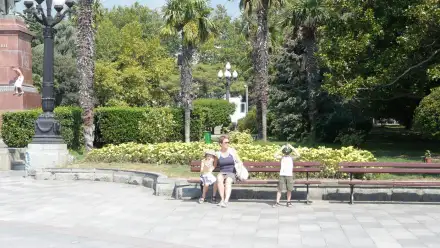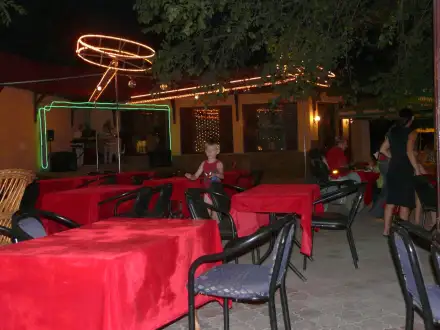Crimea has many tourist attractions, including beautiful beaches, picturesque landscapes, historic towns and castles, as well as numerous opportunities for water sports and mountain tourism.
One of the greatest attractions of Crimea is the Black Sea, with its beautiful beaches and waters ideal for swimming, diving, sailing, and windsurfing. It is also worth visiting the picturesque cities of Sevastopol, Yalta, and Simferopol, which are renowned for their monuments, culture, and history.
In Yalta, you will find the Livadia Palace, once the summer residence of the Russian tsars, as well as the famous Livadia Park, where the Yalta Conference took place in 1945. Simferopol, the capital of Crimea, offers numerous tourist attractions, including museums, art galleries, and architectural landmarks.
Crimea is also a mountainous region, offering many opportunities for climbing, hiking, and mountain biking. The Crimean Mountains are home to scenic valleys, waterfalls, and caves that attract visitors from all over the world.
Odkryj najlepsze loty do blisko sto miast na różnych kontynentach. Sprawdź aktualne ceny i promocje.
Sprawdź loty do blisko sto miast na różnych kontynentachThe Crimean Tatars and the Crimean Khanate
The Crimean Tatars are a Turkic people whose language, Qırım tili, belongs to the Kipchak branch of the Turkic languages, closely related to Karaim and Kazan Tatar. Their identity was shaped mainly around the Crimean Khanate, which existed from 1441 to 1783.
The Khanate emerged as one of the successor states of the Golden Horde, with Hacı I Giray as its first khan. From the 16th century, it became a vassal of the Ottoman Empire, though it retained significant autonomy. The Khanate carried out frequent raiding expeditions into Rus’, Lithuania, and Poland, trading captives – an important source of its income.
In its relations with the Polish–Lithuanian Commonwealth, the Khanate was both an enemy and, at times, an ally – for instance, during wars against Turkey or Muscovy.
In 1783, Crimea was annexed by Russia under Catherine II, marking the end of the independent Khanate. This ushered in an era of repression, Russification, and mass emigration of Crimean Tatars, primarily to the Ottoman Empire. In the 19th century, many Crimean Tatars resettled in Anatolia and Romania, where their descendants still live today.
In 1944, Stalin accused the Crimean Tatars of collaborating with Nazi Germany and ordered the mass deportation of the entire community (about 200,000–250,000 people) to Uzbekistan, Kazakhstan, and Siberia. Many perished during transport and in the early years of exile.
Crimea was stripped of its indigenous population – their homes were repopulated with Russians and Ukrainians. Until the late 1980s, the Crimean Tatars were denied the right to return.
From the late 1980s, and especially after the collapse of the USSR, Tatars gradually returned to Crimea. By the time of Russia’s annexation of Crimea in 2014, they made up about 12–15% of the peninsula’s population. The Tatars firmly opposed the annexation, which led to repressions – including the banning of the Mejlis (their representative assembly), arrests, and disappearances of activists.
Crimea’s Autonomy within Ukraine
Within Ukraine, Crimea enjoyed a special autonomous status, and the presence of the Russian Black Sea Fleet was a significant geopolitical factor from the very beginning of Ukraine’s independence.
After the dissolution of the USSR in 1991, Crimea became part of independent Ukraine as the Autonomous Republic of Crimea (Автономна Республіка Крим). It had its own parliament (the Verkhovna Rada of ARC) and a Constitution of Crimea (approved by Ukraine’s parliament). The official languages were: Ukrainian (the state language), Russian (in practice the dominant one), and Crimean Tatar (in theory).
Crimea did not have the right to conduct its own foreign or defense policy – it remained under the control of Kyiv – but it enjoyed relatively broad cultural and economic autonomy.
Sevastopol was formally a separate city, not administratively part of the ARC. Since tsarist and Soviet times, it has been home to the main base of the Russian (formerly Soviet) Black Sea Fleet.
Although Crimea was part of Ukraine, in practice:
- Road and police checkpoints existed (especially after 2004 and the Orange Revolution), particularly for foreigners.
- For Ukrainian citizens this was not a formal “state border,” but documents and vehicles were often checked, similar to the situation between the Schengen and non-Schengen parts of the EU.
- After the war in Georgia (2008) and rising tensions with Russia, Ukraine tightened controls on entry to Crimea in order to limit the influence of Russian intelligence services.



